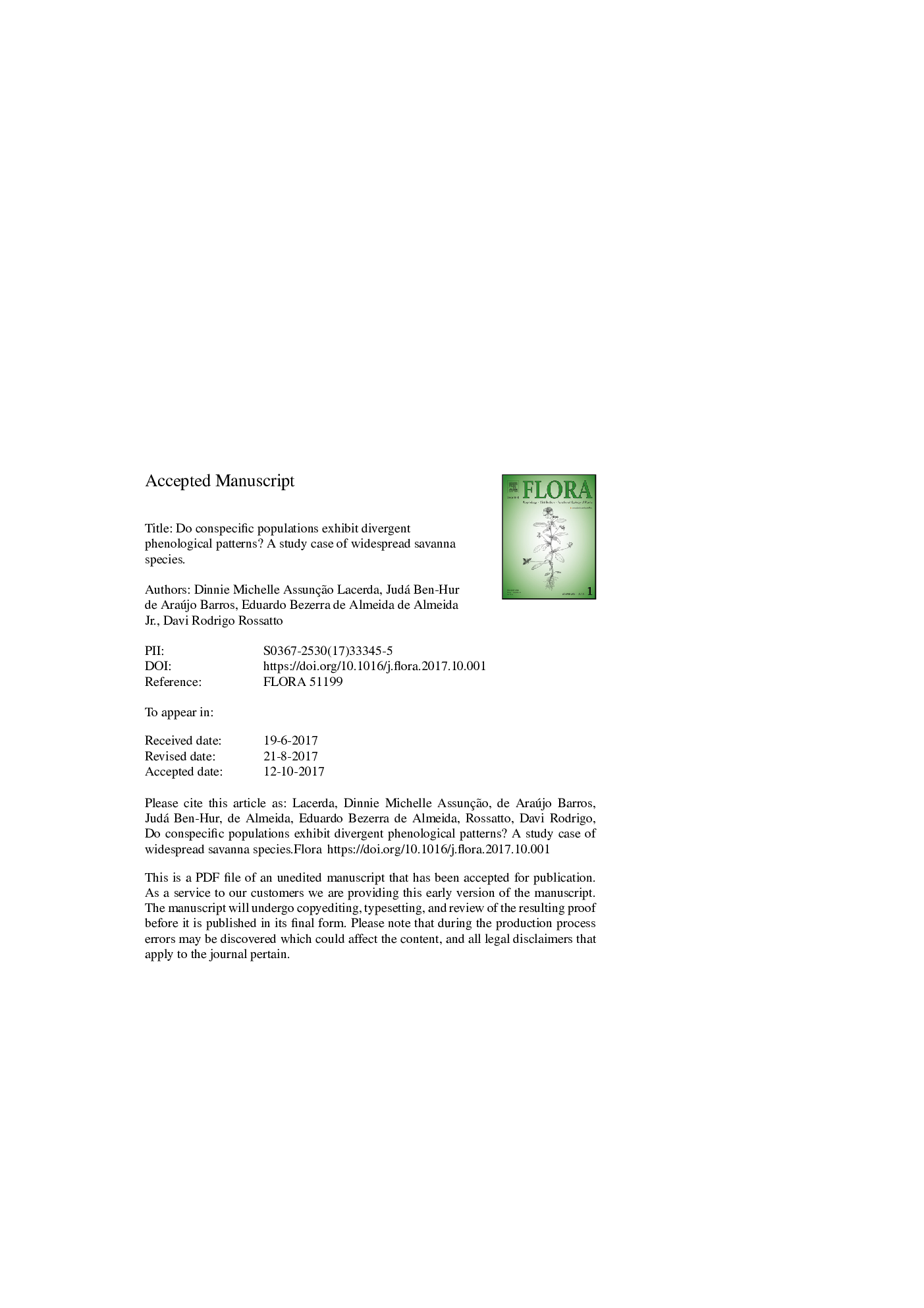| Article ID | Journal | Published Year | Pages | File Type |
|---|---|---|---|---|
| 8470251 | Flora - Morphology, Distribution, Functional Ecology of Plants | 2017 | 29 Pages |
Abstract
Widespread savanna tree species can grow and survive at sites that diverge in water availability and seasonality, thus these species may be able to adjust their phenology in response to site variations. Here we evaluated vegetative and reproductive phenology in five woody species whose populations grow at two savannas sites under divergent climatic regimes, inserted in a large transitional zone between the Amazon forest and the semi-arid region. Patterns of leaf fall, leaf flush and flowering were recorded monthly for five woody species growing under longer (LDS) and shorter (SDS) dry seasons. We evaluated the seasonality, the start and peak dates for phenological events and the associations between phenophases and climatic data. We found a close relationship between phenological events and site temperatures, with phenological peaks in the LDS occurring, in general, about one to three months later than at the SDS site. Leaf fall coincides with warmer and drier periods when the day length is shorter. Leaf production and flowering were associated with increased day length in some populations. Our results support the hypothesis that the conspecific populations have a high degree of association with climatic variables, especially temperature and day length, showing distinct phenological responses associated to the local climatic differences.
Related Topics
Life Sciences
Agricultural and Biological Sciences
Ecology, Evolution, Behavior and Systematics
Authors
Dinnie Michelle Assunção Lacerda, Judá Ben-Hur de Araújo Barros, Eduardo Bezerra Jr., Davi Rodrigo Rossatto,
